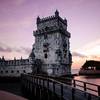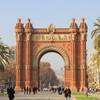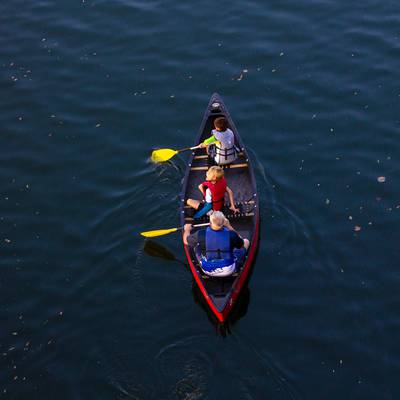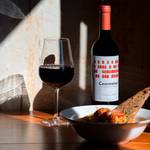General
Transport
People
Accomodation
Food & Drink
Sightseeing
 What to see in Spain?
What to see in Spain?
 Are there any festivals in Spain?
Are there any festivals in Spain?
 What are the best tours to take in Spain?
What are the best tours to take in Spain?
 What are the best beaches in Spain?
What are the best beaches in Spain?
 Are Madrid and Barcelona city cards worth buying?
Are Madrid and Barcelona city cards worth buying?
 Which museums in Madrid offer free entry?
Which museums in Madrid offer free entry?
 What should I know about surfing in Spain?
What should I know about surfing in Spain?
Legal
Money
Safety & Health
Family travel

What to do in Spain?
A vacation in Spain can easily be spent taking part in the country's quintessential activities: Eating paella, sipping espresso at a café along a treelined street, or drinking cider and eating tapas until late in the night. But beyond the cathedrals, shopping, and Flamenco, Spain is a modern country that also offers world-class art museums, some of the world's best gastronomic cuisine, and bustling nightlight. Whether you like to stroll in the park or dance 'til dawn after an exciting, tapas- and wine-filled evening, there's something for everyone in Spain.
Visit The City of Arts and Sciences in Valencia. One of the most amazing spots in Valencia has to be the City of Arts and Sciences, or La Ciudad de las Artes y las Ciencias. This cutting-edge museum and cultural complex is the largest in Europe and hosts world-class exhibits for all ages, including displays for kids, science buffs, and nature lovers. Its sleek design and cool buildings stand out against the traditional architecture of the historic city of Valencia.
See Flamenco performances in Seville. Many people think that flamenco is a dance – it’s not! It’s actually a complete art form that features singing, guitar, handclapping, and yes – dancing. The best way to get the authentic flamenco experience is by heading to Seville to catch a performance is at La Casa del Flamenco in Auditorio Alcántara, a 15th-century home-turned-theater that offers nightly shows.
Eat free tapas. "Going for tapas" is an essential part of life in Spain. It isn't so much what you eat but how: That is, a morsel food with every drink, and each each one in a different bar. Lots of bars, lots of drinks, lots of great food. They say you don't get anything for free in this life. In much of Spain this is indeed the case, but in Granada (and a few select other cities) your tapas come free with your drink.
Watch a bullfight. Bullfighting is no longer anywhere near as popular as it once was; however, bullfighting is an inescapable part of Spain's history and remains an anachronistic curiosity. Ritualized animal cruelty in a progressive Western democracy or an endangered art form? You have to see it for yourself to decide. Choose carefully which city you go to see your bullfighting in, since just because a city has a bullring, doesn't mean the city has a tradition of bullfighting. Bullfighting is originally from Ronda, but Seville is its spiritual home while Madrid has the most supporters today. In Madrid, the bullring part of town, called Las Ventas, is not the most exciting part of town, but it is well connected to the center of the city.
Eat gourmet cuisine in San Sebastián. San Sebastián, in Spain's Basque Country is fast emerging as the foodie destination in not only Spain but the whole of Europe. So, what can you expect of San Sebastian food? Pinxtos, for one, the local name for tapas, as well as Michelin-starred restaurants, and steak and cider. Basque cider is the lesser-known sister of Asturian cider. Experience it at a Basque cider house, along with some excellent steak.
Visit Madrid's three essential art museums. Spain produced two of the most important artists of the past hundred years: Pablo Picasso and Salvador Dali. Find work by both artists in the Centro de Arte Reina Sofia, one of Madrid's three essential museums. But many would say that these two artists are not the best that Spain has to offer, and even more would say that the Reina Sofia is not the best museum in Madrid. Instead, that accolade goes to the Museo del Prado, which houses excellent art from the 14th to the 19th centuries from the likes of Velázquez, Goya and El Greco. The Museo Thyssen-Bornemisza completes the triumvirate of essential Madrid museums.
Eat paella in Valencia. It's another cliché, but when in Spain, you have to try the paella. Unfortunately, unscrupulous Spanish restaurants know this and often serve paella which is frankly unpalatable. For this reason, you have to choose your restaurant carefully. Remember that there are several paella varieties: Bypass the seafood version and go for paella Valenciana. Made from meat instead of seafood, this is the original paella and so is the most "authentic."
Conquer the Caminito del Rey hike. El Caminito del Rey, also known as ‘the King’s little pathway’ is a walkway straddling the side of the El Chorro gorge near Ardales in the province of Malaga. This is not an experience for the faint-hearted! Adrenaline junkies can traverse the 3-kilometre walk along a 1-meter wide path, 100 meters above the gorge floor below. Originally built as a route for workers at the hydroelectric power plant nearby, it now attracts thrill seekers from around the world. The path was closed for four years, reopening in 2015, following several deaths. Now though, it is possible to traverse the Caminito far more safely, but the excitement remains. As far as points of interest in Spain go this must be amongst the most hair-raising!
Explore the Spanish islands. The Spanish islands are as diverse as the mainland. From the party atmosphere of Ibiza to the quieter and more relaxed La Gomera in the Canary Islands, Spain boasts some of the most beautiful islands in Europe. Many of them are popular with families and groups and there is no end of package tours and customized itinerary holidays available. Each island has its own unique flavour and whether you’re looking for a quiet family holiday or an all-night party you’ll find an island that’s just right!

How do I use ATMs in Spain?

Where to buy alcohol in Spain and how much does it cost?

Do people in Spain speak English?

What are the best beaches in Spain?

Can I use a debit or a credit card?
